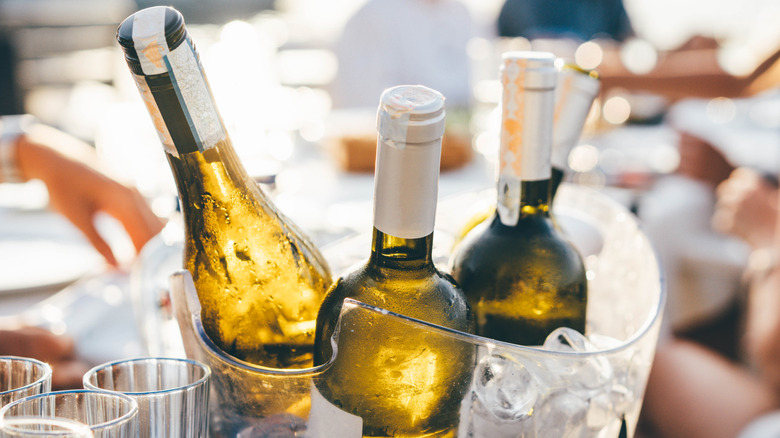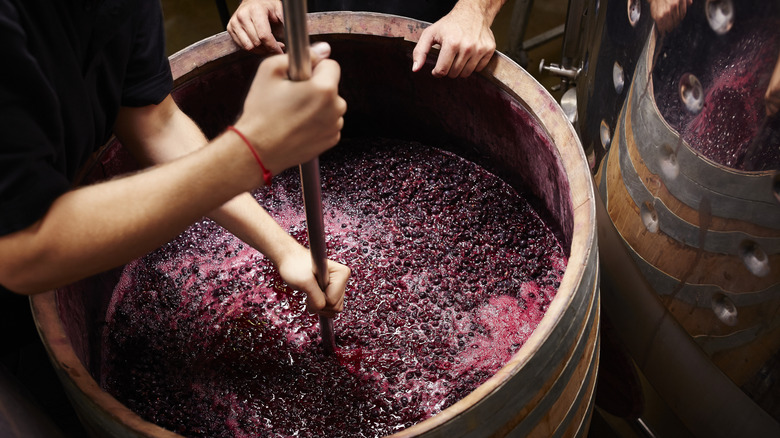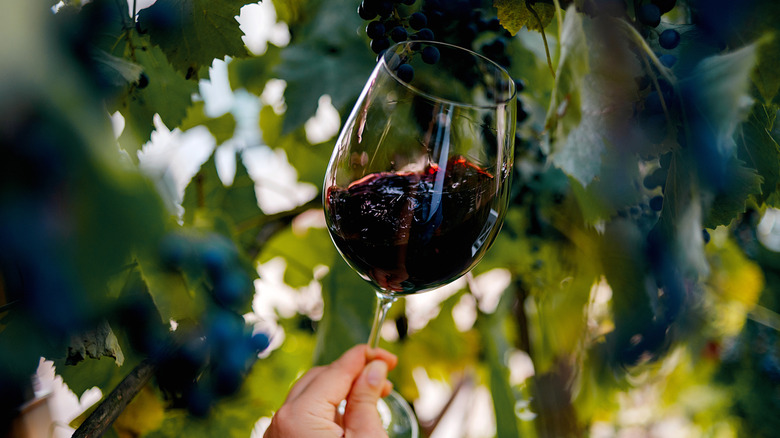How Is Non-Alcoholic Wine Made?
Non-alcoholic wine is having a serious moment. Since many NA brands began to emerge around 2018, the worldwide market for alcohol-free wine has exploded, reaching a total market value of $2.57 billion in 2024 — and it's projected to grow to $6.94 billion over the next 10 years. Younger generations are buying less alcohol altogether, and a Gallup poll reported that drinking is increasingly viewed as bad for your health. Those thirsty oenophiles have reported a number of different reasons for the move away from alcohol consumption, everything from a focus on fitness to care for mental health.
But as popular as the sober-curious movement has become in recent years, it's hardly a new phenomenon. A non-alcoholic wine alternative came on to the scene in 1869, when prohibitionist and dentist Thomas Bramwell Welch created Dr. Welch's Unfermented Wine (which later became the Welch's Grape Juice we still know today) in order to avoid alcohol consumption during communion.
Those who have tried non-alcoholic wine, though, know that it certainly isn't just grape juice. Although there are some flavor and experiential differences, non-alcoholic wine tastes much like, well, wine. The reason for the similarity is that most non-alcoholic wine begins its life as its alcoholic counterpart. It isn't until the end of vinification that alcohol is removed.
Removing alcohol via a vacuum or reverse osmosis
Much like traditional vintners, non-alcoholic winemakers choose their varietals, press the grapes, and add yeast to jumpstart the fermentation process. Fermentation, though, is what turns grape juice into an alcoholic beverage, and non-alcoholic wines do initially undergo this process before the alcohol is removed. Removal can happen in a few different ways.
One of the first patented methods came about in 1908, when Dr. Carl Jung (no relation to the psychoanalyst) created a process for vacuum extraction. Alcohol is easy to remove if you just heat the liquid to alcohol's boiling point, 173.1 degrees Fahrenheit; the alcohol will burn off, leaving the grape juice behind. But this high temperature will completely alter the quality of the drink. Jung's vacuum extraction lowered alcohol's boiling point, allowing for more gentle removal.
In the 1980s, another vacuum-based alcohol-extraction method emerged. Andrew Craig created the Spinning Cone Column, which is a series of spinning cones inside stationary cones that uses centrifugal force and steam under a vacuum to separate volatile compounds (in this case, mostly alcohol) from liquids (the rest of the wine). The liquid flows downward, while steam forces the volatile compounds upward. The first flavorful aromas that escape during this process can be contained and later added back in so that the NA wine keeps more of its flavor.
The other common method is reverse osmosis, wherein alcoholic wine flows through a membrane that filters out the alcohol molecules. Many of the wine's qualities are retained this way, but it can be an expensive process.
Adding the flavor back — and maybe some burn
The retention of wine's qualities is one of the greatest challenges of creating non-alcoholic wine. Wine is beloved for its body, mouthfeel, and distinctive, delicate, complex flavors and aromas — and it also has a relatively high alcohol content. Where the average beer sits at around 5% alcohol by volume (ABV), wine has closer to 12% ABV. When you remove the alcohol, you're taking out a large percentage of what's there, and even the gentlest methods alter the profile of the final product because alcohol has its own taste and feel. When it comes out of the spinning cone or passes through the reverse osmosis membrane, the drink could be really light and thin or taste completely different than what was expected.
So non-alcoholic vintners experiment with additives to recreate the taste and texture of wine. They can add in ingredients like tannins, yeast proteins, flavoring, or sweeteners to make up for what was taken out and improve the overall profile. Sometimes, the additives might introduce a small amount of alcohol back, but as far as the legal definition of non-alcoholic goes, that's okay because dealcoholized wine doesn't have to be completely alcohol free. Although the definition of "non-alcoholic" and "alcohol-free" varies from country to country, the U.S. Food and Drug Administration required that wine labeled "non-alcoholic" be less than 0.5% ABV and wine labeled "alcohol-free" be fully 0.0% ABV. So, check out the label, then decide the best non-alcoholic wine for you.


